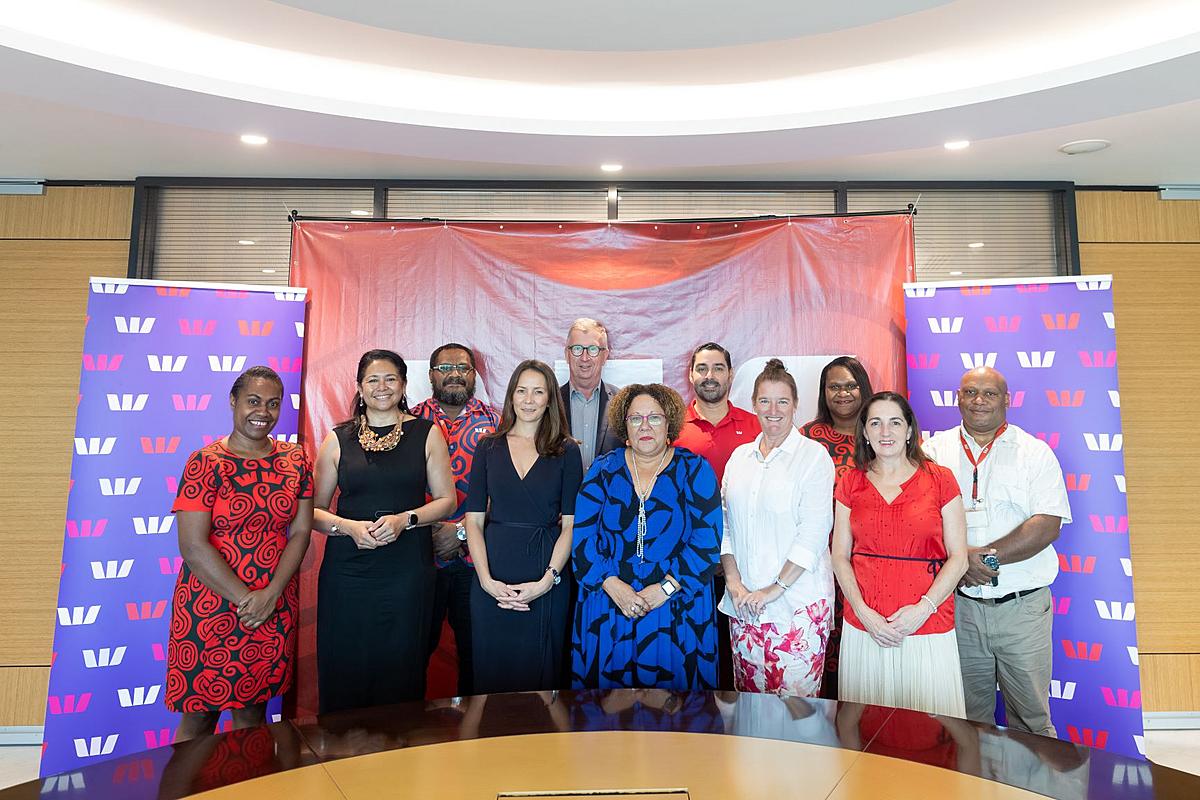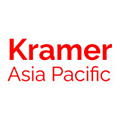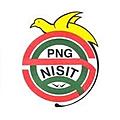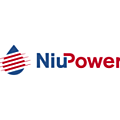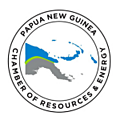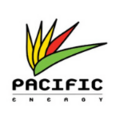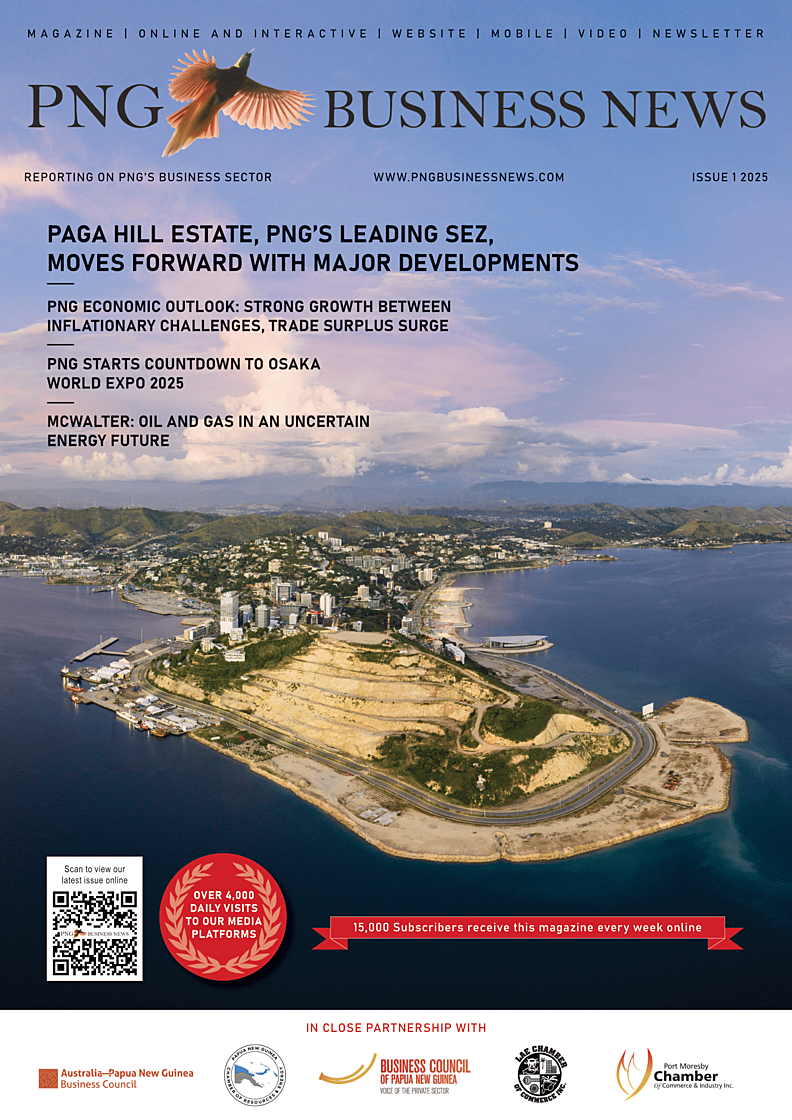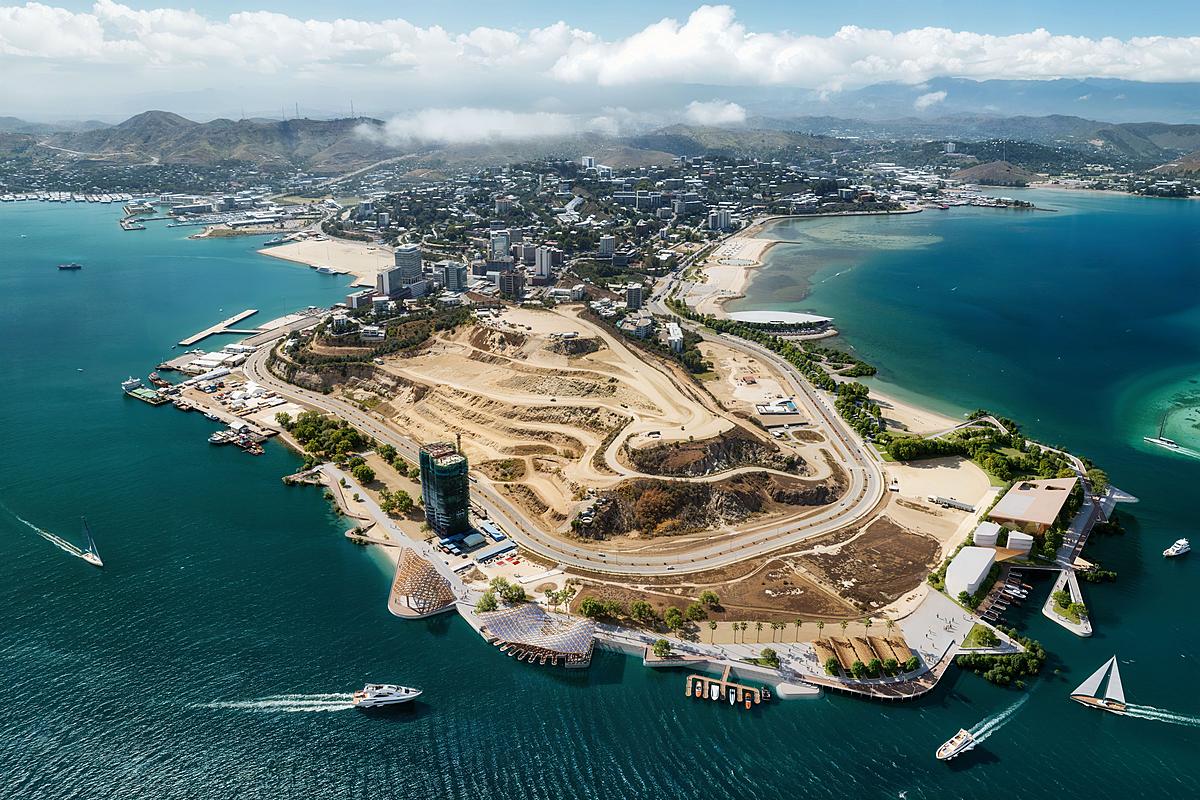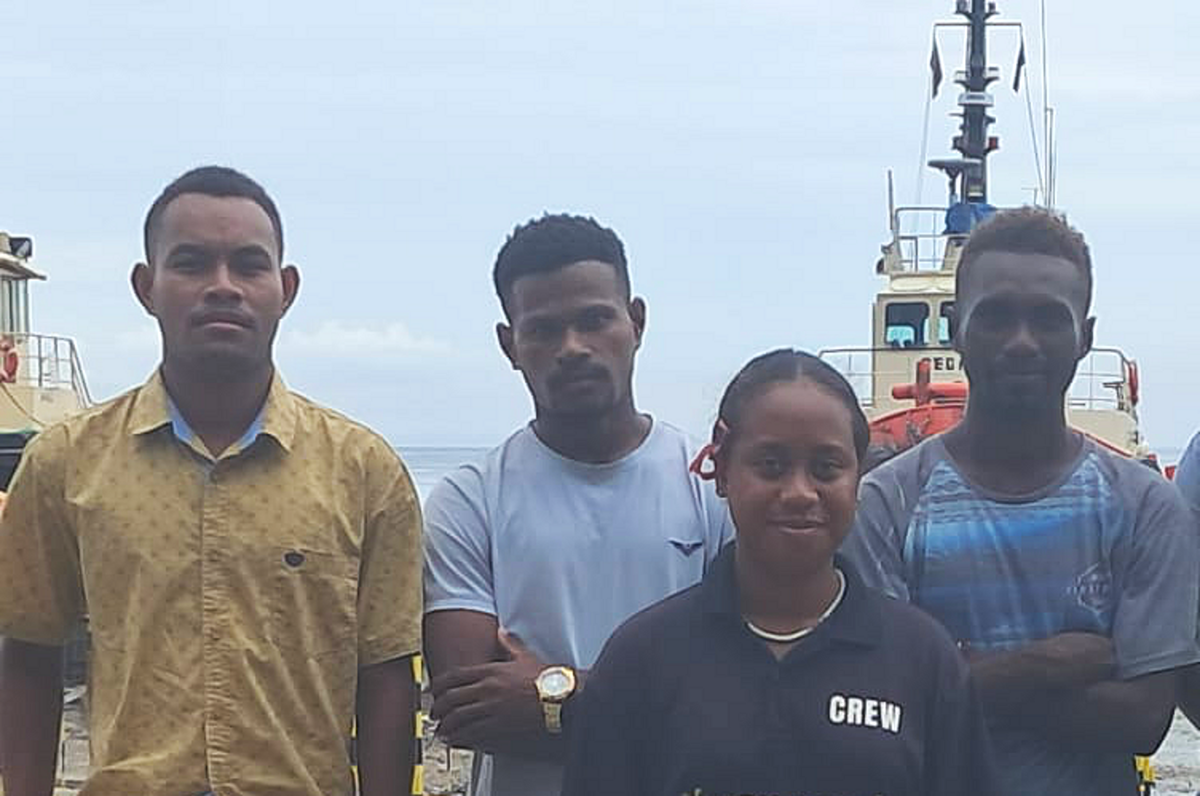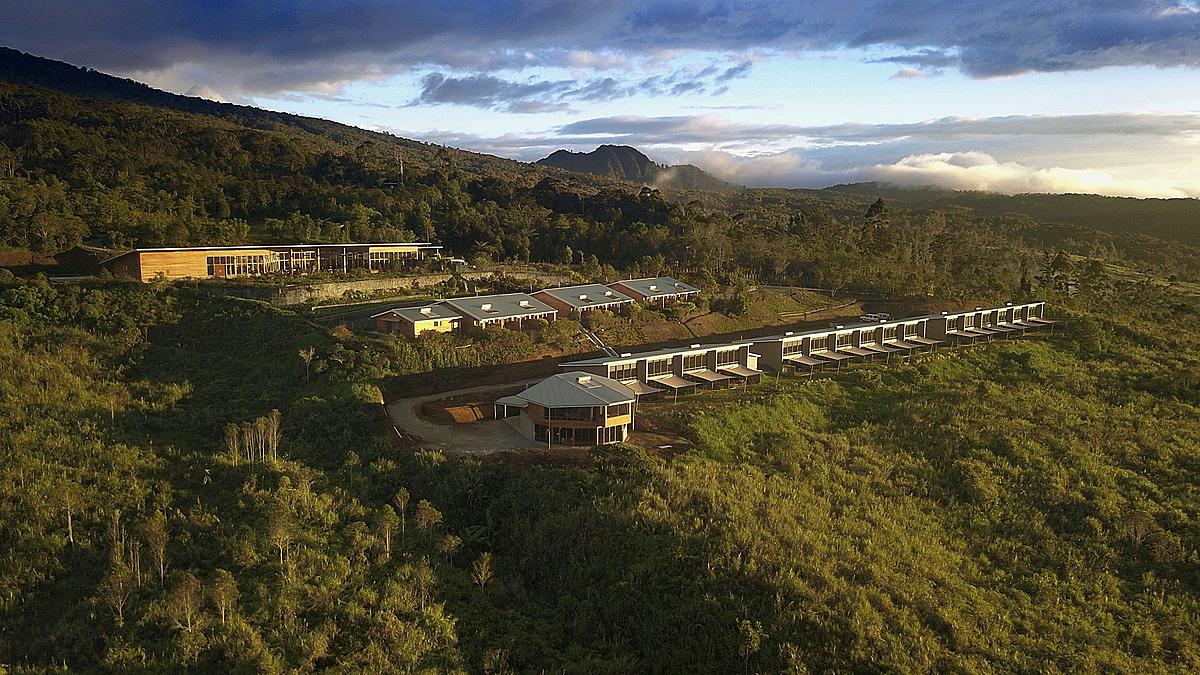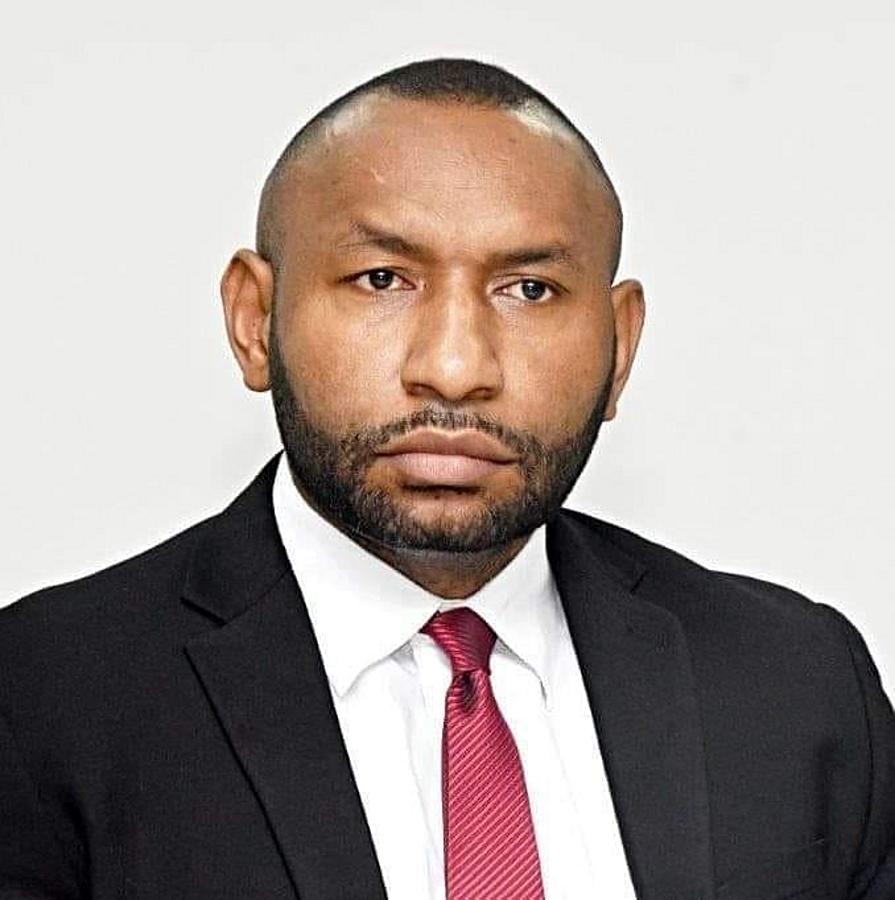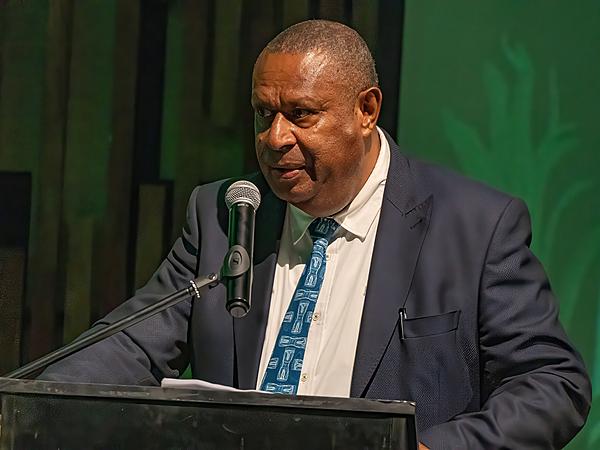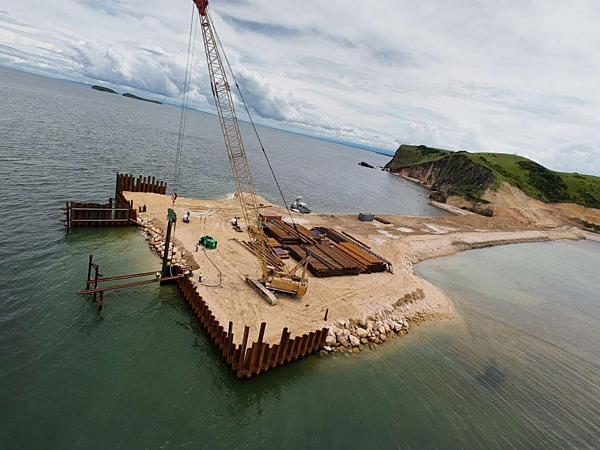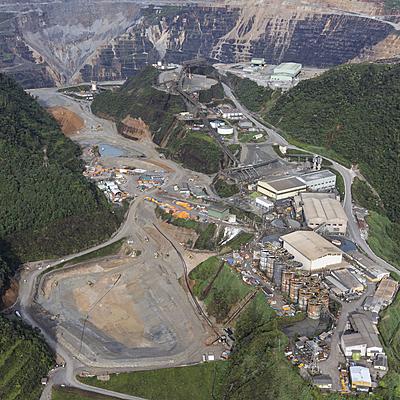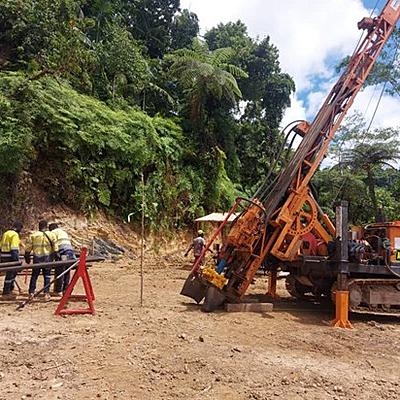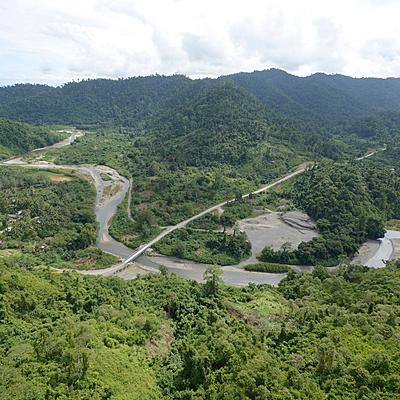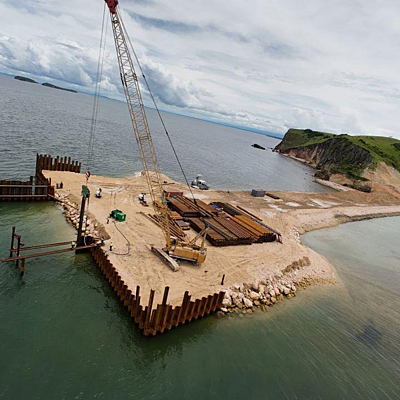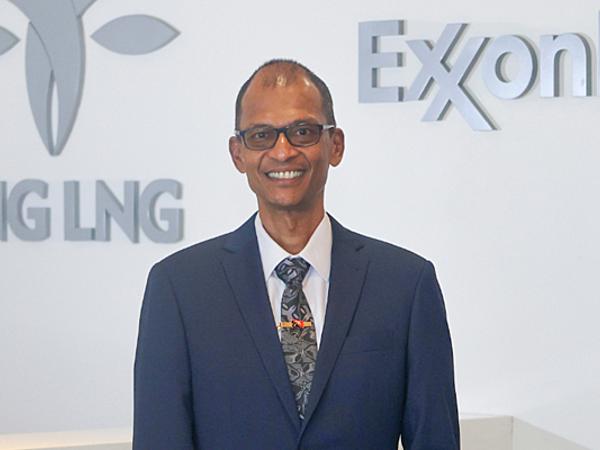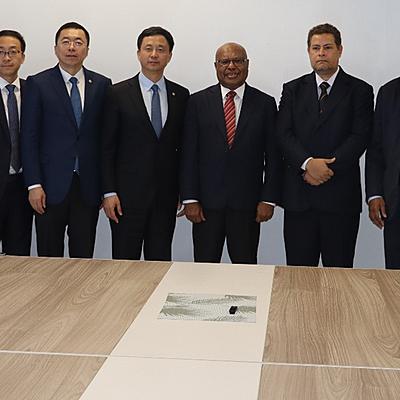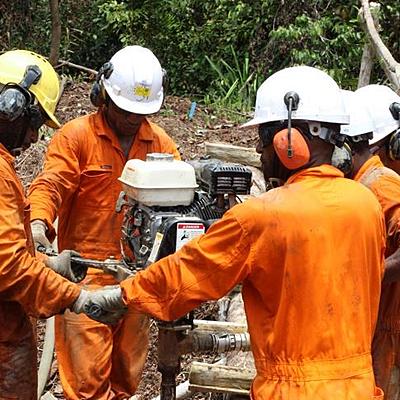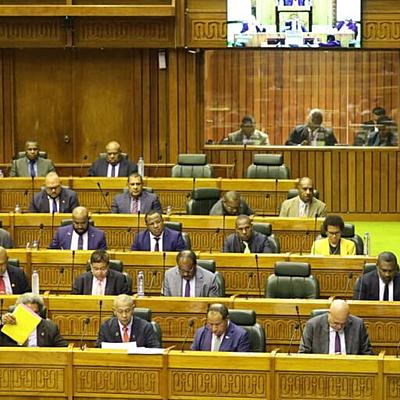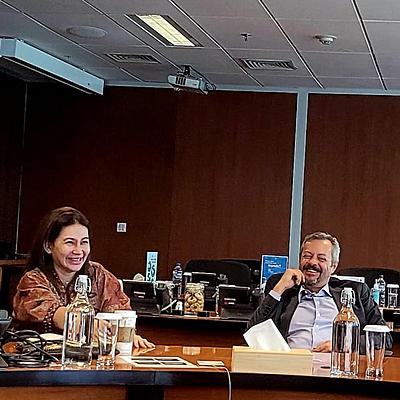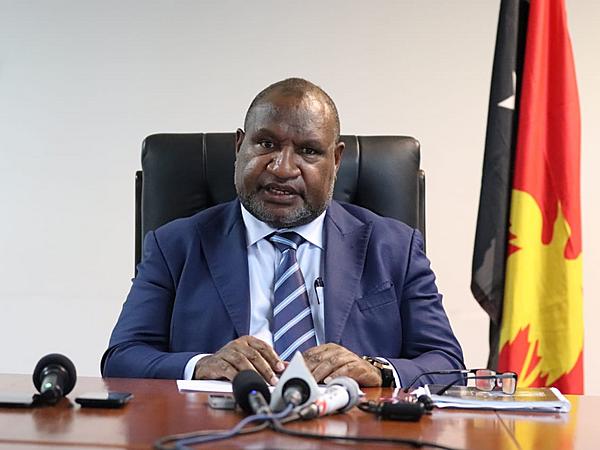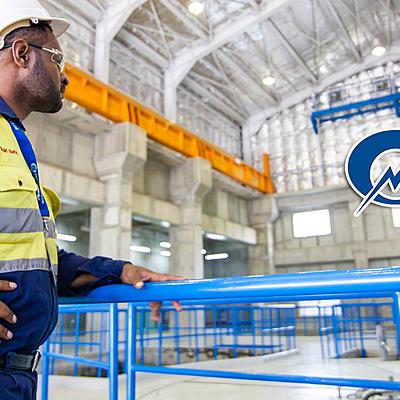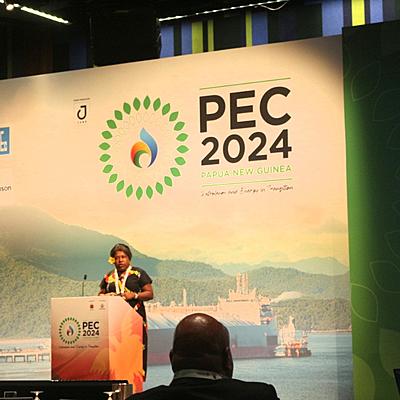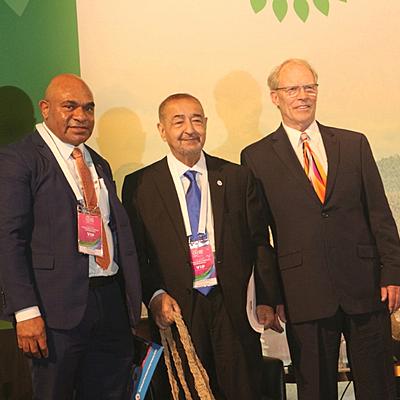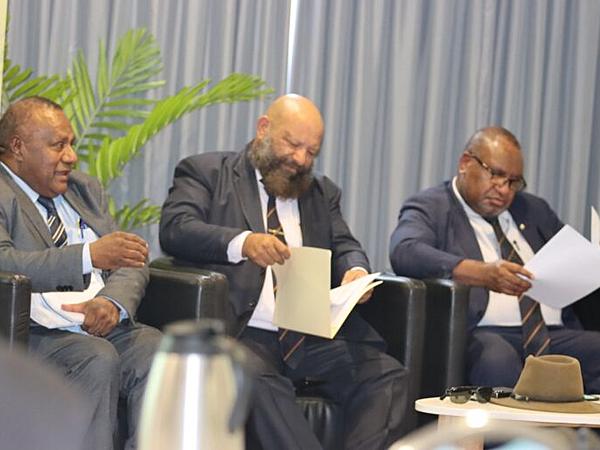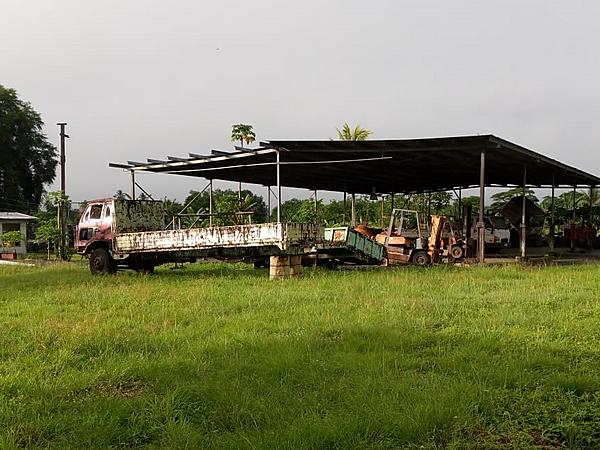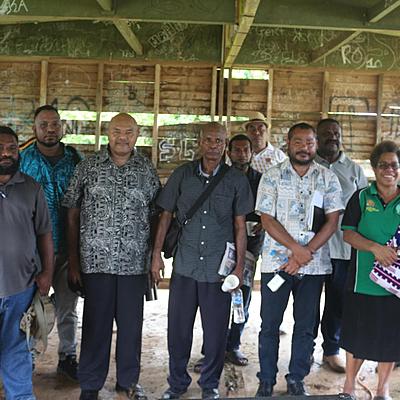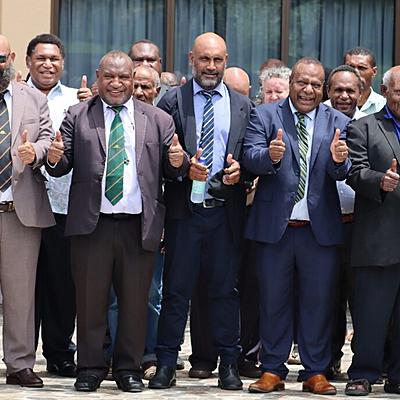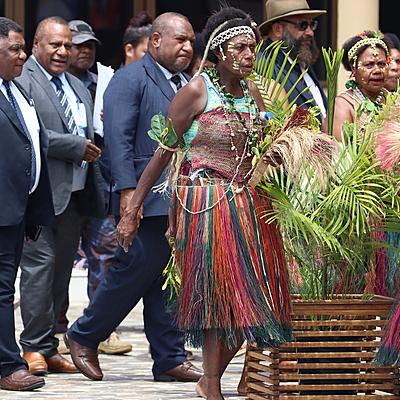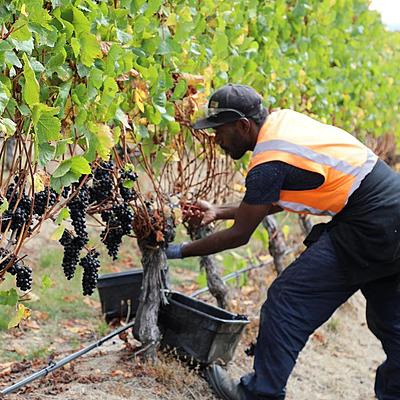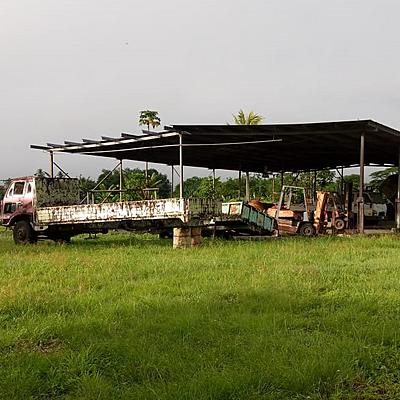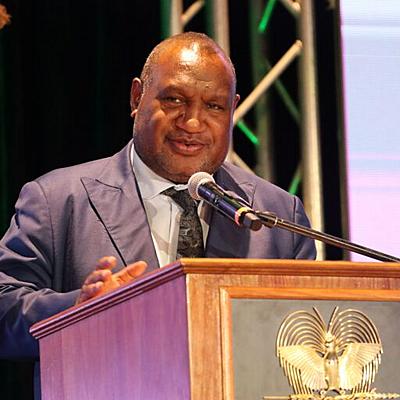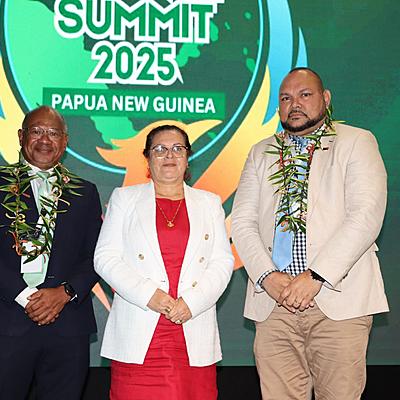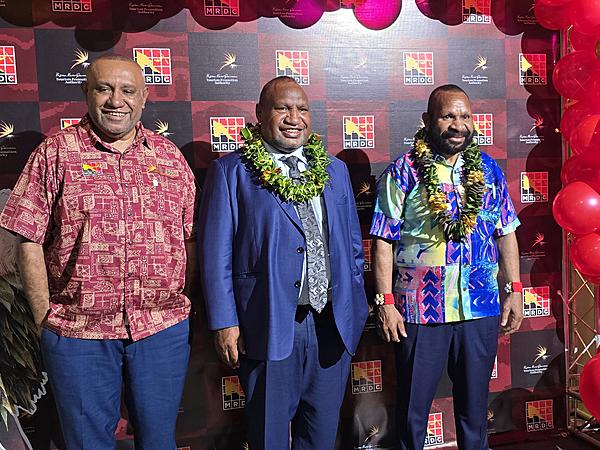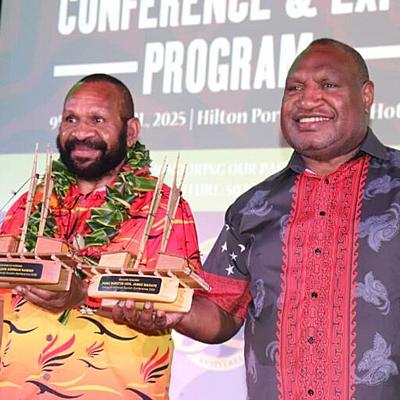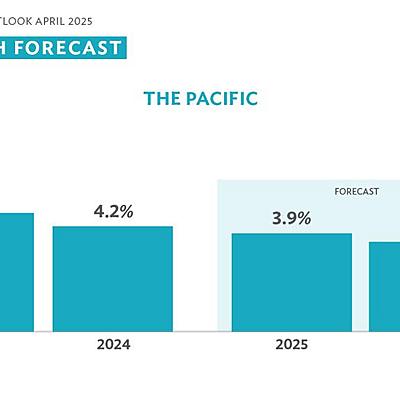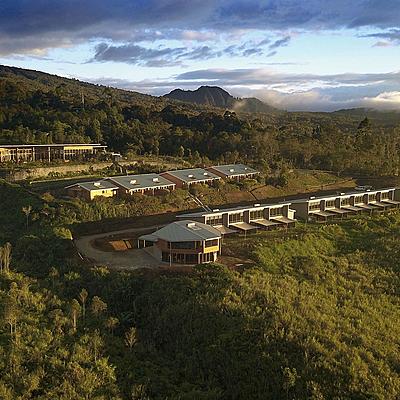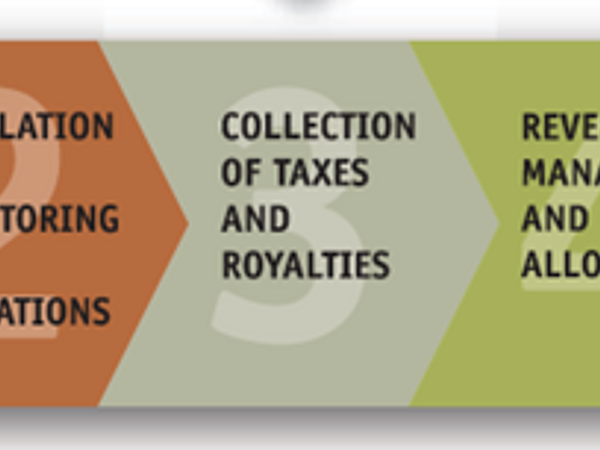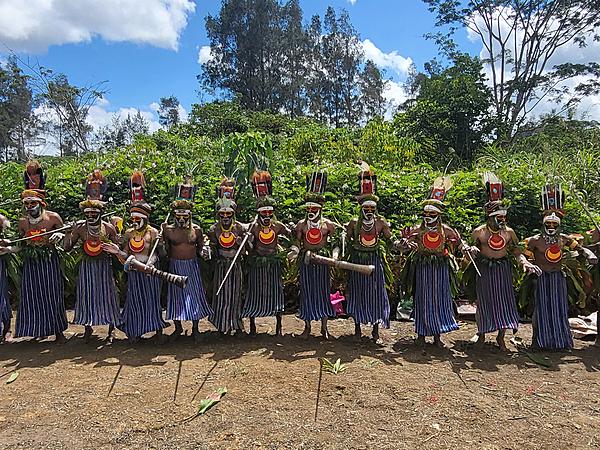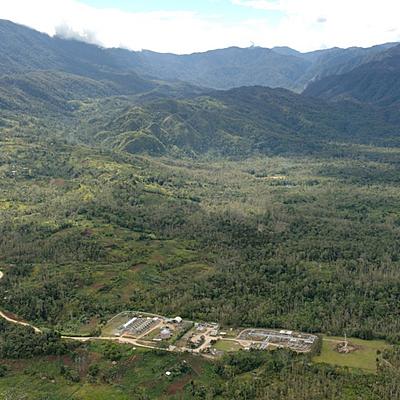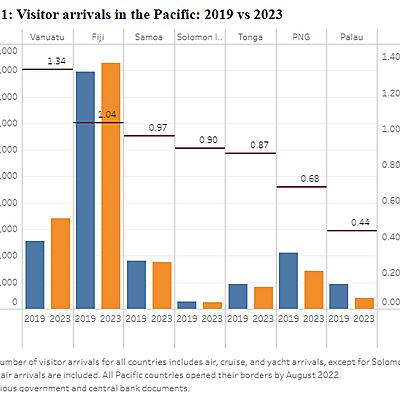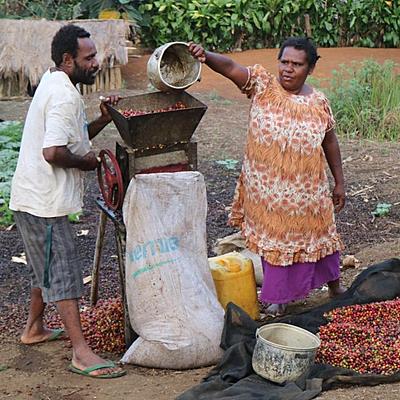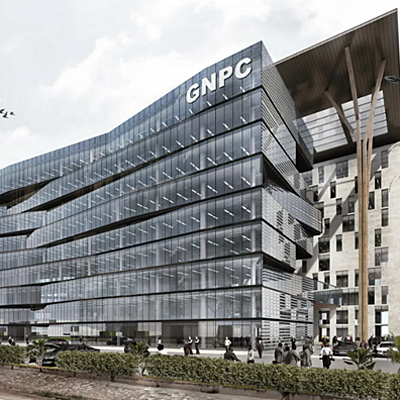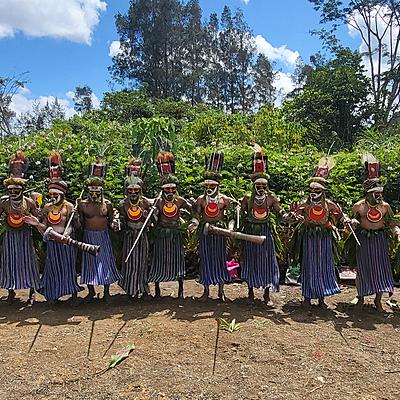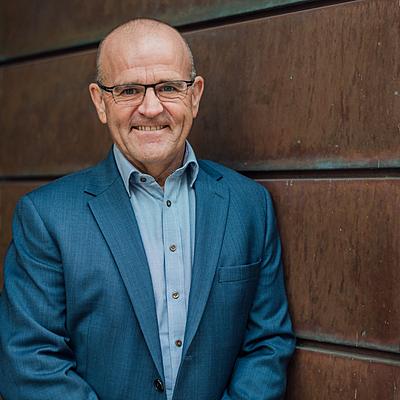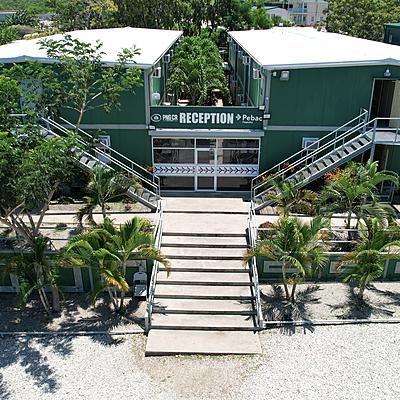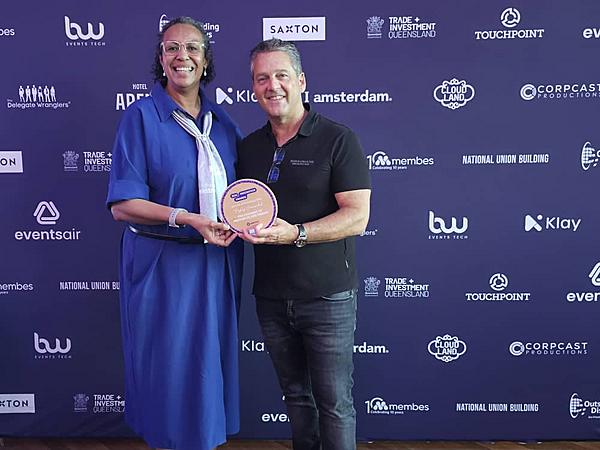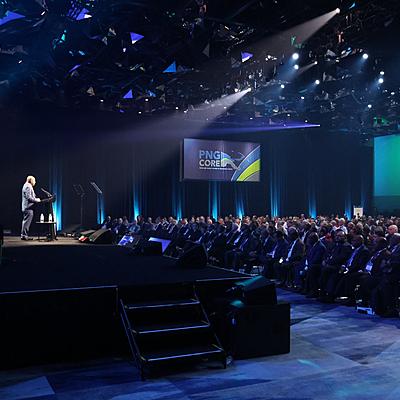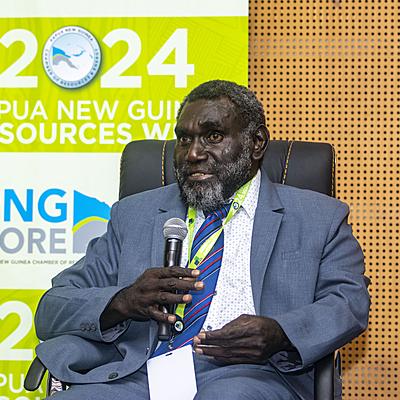Latest News
Trending News
The Minister for International Trade and Investment, Hon. Richard Maru, yesterday, opened the Consultation Workshop organized by the Department of International Trade and Investment and the National Trade Office on the total review of the full impact of the new U.S tariff increases.
Minister Maru told the participants from both Government and the private sector to provide input on this assessment of the full impact of the new U.S Tarriff increases to major trading partners including Australia, New Zealand, Fiji, Vanuatu, Papua New Guinea (PNG) and many others.
Minister Maru said: “We must also assess the impact on industries that depend on U.S imports like Air Niugini who mainly import aircraft parts from the U.S. While coffee is one of our major exports to the U.S, can we not replace the U.S market with new markets like Japan and New Zealand instead of depending on the U.S Market? PNG does not impose tariff on services from the U.S and this is one area we need to look at. We also need to look at the Fisheries Access we give to the U.S fishing companies who fish and catch tune in our EEZ under our Bilateral Agreement. This is a good opportunity to look at the totality of our overall trade and investment relationship with the U.S. No stones should be left unturned.”
“The U.S President Donald Trump claims this action is necessary to make U.S great again. There is so much speculation like the U.S President is doing this as a short-term measure to get the stock market to crash so a lot of his fans and supporters can buy stocks at a very cheap prices. Nobody really knows the true intentions behind this U.S decision. Only time will tell whether this is a long-term measure to grow the U.S economy and make U.S great again or it is a short-term measure to achieve some personal agenda.”
Minister Maru further stated: “The actions of the U.S has totally undermined the rules-based multilateral system administered by the World Trade Organization (WTO) which PNG is a member of. The U.S is now bringing in protection not seen and experienced by the world in over 10 years and the world has to decide whether to have US in the WTO family or throw the U.S out while the rest of the world carries on with the rules-based multilateral system.”
Minister Maru also told the participants at the workshop to review PNG’s tariff structure and consider what support the Government should be giving especially the manufacturing industry.
Minister Maru requested a full report of the review including recommendations to be presented to the NEC for the Government to consider.
“I want the review completed before the end of this month,” said Minister Maru.
The country’s total mineral export revenue in 2024 was K19 billion said Mineral Resources Managing Director Jerry Garry.
It is expected that this year, total export revenue will be K30 billion, subject to gold price, low exchange rates, and attainment of full production in Porgera Mine.
Mr Garry made these announcements during a hand-over, take-over ceremony of the Mining Ministry between the former Mining Minister Hon Wake Goi and the new Mining Minister Hon Rainbo Paita in Port Moresby.
Mr Garry said the state was currently in the process of permitting Wafi-Golpu and Frieda River Mining projects, which are worth a total value of almost USD12 Billion, adding that under the leadership of Minister Paita, the permitting of these two mega projects would be will concluded.
He said as far as sustainability and continuous generation of the country’s annual revenue is concerned, mineral exploration was crucial especially for a country like PNG whose economy is largely dependent on mineral revenue.
“Without exploration, there will be no mining hence no revenue for the country,” said the MD.
Exploration expenditures have dwindled, and no new significant discoveries have been announced in the last decade.
By current projections, all operating mines will close down by around mid 2060.
The lead time or time taken from discovery to commissioning of a mine can be anywhere between 15 years as in the case of Lihir and more than 50 years as in the case of the Frieda River Mine.
The use and deployment of appropriate technology is paramount, given the rugged terrains, increasing law & order issues and tougher Standard Operating Procedures (SOP) for major players amidst other challenges.
“ Minister, I am proud to inform you that MRA has the capabilities to meet the challenges and associated complexities, to ensure we attract exploration investments and maintain a robust mining industry,” said Mr Garry.
He said the MRA’s geological survey has commissioned a seismic reflection survey, adding that the agency was waiting for the final results before tests for deep copper-gold bodies could be conducted around the country.
“We are considering the deployment of major magnetotellurics survey which has been very successful at K92 mine and also up at Tolukuma Mine. Application of technologies by the government will aid derisk many of the highly prospective belts for deeper porphyry copper-ore bodies, and encourage private sector investments in exploration and development.
Mr Garry told Minister Paita that under his leadership and support, the MRA would strive to find new mineral deposits to replenish the depleting mineral inventory in this country.
And the timing is critical now, more than ever.
ExxonMobil recently appointed Dinesh Sivasamboo as its new Chairman and Managing Director of ExxonMobil PNG Limited.
This appointment will be Sivasamboo’s second leadership position with ExxonMobil PNG Limited, having previously served in PNG from 2016 to 2019 as its Vice President for Production.
Sivasamboo has held numerous, global senior leadership positions over the course of his 30-year career at ExxonMobil. Most recently, he held the position of Chairman and President of ExxonMobil Exploration and Production Malaysia Inc. Prior to that role, he was the President and Managing Director of ExxonMobil Kazakhstan Inc., and held positions in Qatar and the United States.
“I am honored to be returning to PNG as Chairman and Managing Director of ExxonMobil PNG Limited. The PNG LNG Project has – through the strength of its partnerships – achieved so much during its first decade,” said Sivasamboo. “I look forward to both leading it into its second decade, as well as building upon its success to help deliver the next phase of LNG projects for this country.”
Sivasamboo becomes the company’s fifth Chairman and Managing Director, joining an esteemed list that includes his immediate predecessor, Tera Shandro, as well as Peter Larden, Andrew Barry and Peter Graham.
Prime Minister Hon. James Marape has reaffirmed his government’s commitment to energy reform, economic transformation, and responsible leadership as Papua New Guinea approaches its 50th year of independence.
The Prime Minister was speaking at the National Power Sector Forum, jointly hosted by the Government of Papua New Guinea and the Asian Development Bank (ADB) at APEC Haus in Port Moresby.
The Forum—the first of its kind in PNG—gathered more than 100 key national and international experts, including government officials, industry leaders, and development partners, to discuss power sector priorities and solutions for achieving reliable, affordable, and sustainable energy to support inclusive and comprehensive growth.
Addressing this high-level gathering, Prime Minister Marape expressed deep gratitude to the people and businesses of Papua New Guinea for their tolerance and resilience in the face of decades-long challenges in the power sector.
“You have lived with the pain and misery of inefficiencies in our power sector for too long. Thank you for your great tolerance. We have inherited a broken system, but we are taking decisive action to rebuild and reform,” the Prime Minister said.
Since assuming office in 2019, the Marape Government has made significant progress in stabilising PNG Power Ltd, investing over K400 million and implementing major structural reforms at both board and executive levels.
A key milestone has been the establishment of the National Energy Authority (NEA), now tasked with regulatory oversight and energy policy development—freeing PNG Power to focus solely on electricity generation and distribution.
“Energy drives the world. From electricity to water and transport, energy is central to human advancement. We want to ensure 100% reliable, clean energy access to our people—well before our 70th anniversary in 2045,” Prime Minister Marape declared.
The Prime Minister committed to going beyond the current 70% national electrification target, pushing for universal access through decentralised power solutions, private sector partnerships, and provincial leadership.
He also delivered a firm message to the public service and SOEs: “If you cannot do the job, leave the job. I have no time to waste. Our people deserve better, and the time for excuses is over.”
Energy reform, he emphasised, is central to his government’s broader vision of building a K200 billion economy, capable of supporting a growing population of more than 10 million. When he took office, the economy stood at K79 billion. Today, it has reached K120 billion, with projections to exceed K130 billion by year-end.
Reinforcing PNG’s reputation for fiscal responsibility, Prime Minister Marape noted that the country has never defaulted on its international debt obligations, including during the global COVID-19 crisis.
“We peaked at 52% debt-to-GDP during COVID, but today we are back to 47%. We continue to honour our debts, our covenants, and our credibility as a borrower,” he said. With a landmass larger than Japan, the UK, and New Zealand—and one of the most culturally and linguistically diverse populations in the world—Prime Minister Marape said that energy solutions must be tailored to the country’s geography and decentralised realities.
He reaffirmed the Government’s focus on provincial-level energy initiatives, empowering provinces like Morobe, East New Britain, and the Highlands to pursue investor-friendly, locally driven solutions.
“We must stop managing PNG Power like it’s 1975. This is 2025. Let private capital in. Let innovation lead. Let’s not waste another 20 years.”
As PNG looks toward 2045, the Prime Minister invited development partners and investors to join the country’s transition to clean, renewable energy, including opportunities in hydrogen, thermal, solar, and hydroelectric power.
“This is a country with global potential in clean energy. Let’s build a mature, energy-secure, climate-resilient economy together,” he concluded.
In a decisive address at the National Agricultural Industry Public-Private Sector Partnership Conference recently, Prime Minister Hon. James Marape, MP, reaffirmed the Government’s commitment to prioritizing agriculture as a cornerstone of national development.
This pivotal gathering underscored the Government’s ongoing efforts to enhance agricultural productivity as a means of sustaining economic growth and improving the livelihoods of Papua New Guineans.
Prime Minister Marape highlighted the significance of the agriculture sector, which has been strategically divided into four vital components: the main Agriculture Department, Coffee, Cocoa, and Oil Palm.
This restructuring aims to refine focus and boost the productivity of these subsets, integral to the nation’s economic framework.
“For four consecutive years, we have witnessed a growth of four percent in the non-resource sector,” PM Marape stated.
“This growth is a testament to the effective harnessing of economic activity and productivity that sustains our people.”
The Prime Minister also addressed graduates in attendance, urging them to leverage their education and communal resources to foster agribusiness initiatives.
“With your wealth of knowledge gained from learning institutions, you can utilize your lands and collaborate with your tribal clansmen to drive business success. This is your opportunity to make a profound impact,” he said.
PM Marape committed to taking the insights and outputs from the conference back to his office to form actionable strategies to further advance the agricultural sector.
He referred to the Government’s price support program launched in 2020, and emphasized the critical need for an established policy mechanism, particularly in light of six years without a robust agricultural structure from the Agriculture Department.
“How can we progress without an established policy mechanism?” he challenged.
Despite the visible improvements in infrastructure, PM Marape expressed concern over lagging productivity levels.
Encouraging the agricultural community, he implored stakeholders to take full advantage of recent legislative changes, including the new income tax act, which offers reductions in taxes and enhanced incentives and tariff measures.
“The government is also establishing access to Asian markets, particularly China, and we are actively working with bilateral partners to enhance food security,” Marape added, highlighting the Administration’s efforts to integrate Papua New Guinea’s agricultural sector into the global market.
In conclusion, the Prime Minister reiterated his belief in agriculture as a vital driver for the nation’s economic future and a key element in enhancing food security and community well-being.
The government remains committed to supporting the agriculture sector and its stakeholders, with a focus on ensuring sustainable growth for generations to come.
The Centre for Excellence in Financial Inclusion (CEFI) and the Western Pacific University (WPU) have signed a landmark Memorandum of Understanding (MoU) to jointly promote entrepreneurship, fintech, financial literacy, and microfinance education in Papua New Guinea (PNG).
The MoU between CEFI and WPU signifies a collaborative effort to advance education, particularly in the realms of entrepreneurship and microfinance, fostering mutual growth and development. The MoU outlines several areas of collaboration, including:
Support WPU with the Entrepreneurship and Innovation Hub programs
Set up of the Fintech Hub with support from WPU
Curriculum Development and Implementation
Monitoring and Evaluation of Program Impact
Industry linkages and Stakeholder engagement
The MoU was officially signed on Friday, April 11, in Mt. Hagen by CEFI’s Acting Executive Director, Mr. Peter Samuel, and WPU President, Dr. Janet Rangou (PhD). This strategic partnership signifies a shared commitment to building human capacity, promoting innovation, and equipping students with practical skills to drive economic growth and financial empowerment across the country.
Speaking at the signing ceremony, Mr. Peter Samuel expressed enthusiasm for the partnership.
“We’re very excited about this collaboration and truly appreciate WPU’s innovative spirit. Attending the graduation today gave us confidence that we are partnering with an institution that shares our mission to empower our people. We look forward to the opportunities this partnership will create.”
In response, Dr. Janet Rangou highlighted the value of the partnership for student development, saying:
“We hope this collaboration will allow us to equip our students with lifelong, practical skills that will serve them and their communities long after graduation.”
Earlier in the day, Mr. Samuel and his team attended Western Pacific University’s inaugural graduation ceremony at its campus in Ialibu, Southern Highlands Province. A total of 99 students graduated in various disciplines, including Certificate in Higher Education, Bachelor of Arts in International Business Management, Bachelor of Science in Computer Networks, and Bachelor of Science in Computer Programming. The event also celebrated the official opening of the WPU’s state-of the art e-Library.
The keynote address was delivered by Hon. Peter O’Neill, Member for Ialibu-Pangia and former Prime Minister of Papua New Guinea. He spoke passionately about the university’s journey since its conception in 2012, noting that its founding idea emerged from the need to bring higher education closer to remote communities.
“This university is a national institution that has grown through both local and international support. It’s not just for the Southern Highlands but for the entire country,” said Mr. O’Neill.
Echoing this sentiment, Southern Highlands Governor Hon. William Powi described the graduation as a historic milestone for the province and the nation.
“While the graduating class may be small, their success marks the beginning of a legacy of educational transformation,” he said. The Governor also announced K68, 000.00 in tuition support and a K1 million contribution toward university infrastructure and services, with potential future investments in student facilities and postal services.
Minister for Higher Education, Research, Science and Technology, Hon. Kinoka Feo, also addressed the ceremony, reaffirming the government’s commitment to expanding higher education in PNG. He highlighted increased budget allocations, the expansion of the Higher Education Loan Program (HELP), and the PESA initiative as examples of national efforts to ensure quality education and accessibility for all.
Minister Feo also acknowledged the contributions of key figures in the establishment of WPU, and the Department of Higher Education, along with other stakeholders who guided the institution through official government processes.
In her remarks, Dr. Janet Rangou paid tribute to several individuals instrumental in WPU’s journey, including the late Sir Peter Barter, Professor Father Jan Czuba, and the former PNG Prime Minister and current Ialibu-Pangia Member Hon. Peter O’Neill , thanking them for their vision, support, and belief in the power of education. She emphasized WPU’s ongoing mission to become a university of choice in PNG and beyond, committed to lasting societal impact.
Dr. Rangou concluded by expressing gratitude to students, staff, partners, and the WPU community, underscoring their collective role in shaping a more educated and inclusive future for Papua New Guinea.
Port Moresby buzzed with cultural displays and insightful discussions as Papua New Guinea inaugurated its National Tourism Conference and EXPO on April 9, marking 50 years of showcasing the nation to the world and heralding a new era of sustainable and inclusive tourism.
Under the theme "Indigenizing Culture, Modernizing Infrastructure, and Promoting Peace through Tourism," the conference gathered representatives from government, the private sector, community leaders, tourism businesses, and international guests, all aiming to highlight tourism as a key pillar for economic growth.
Augustine Mano, Mineral Resources Development Company (MRDC) Managing Director, emphasized the conference's role in stimulating discussions on critical issues within the sector, potentially triggering its transformation.
He noted that tourism could address PNG’s economic challenges, such as foreign exchange issues, unemployment, and SME support, if properly supported.
The Minister for Tourism, Arts & Culture, Hon. Belden Norman Namah, called on stakeholders to honor the past while enhancing PNG's sustainability and global appeal as a premier tourist destination. He declared: "Tourism in Papua New Guinea is not dead, tourism is alive!"
Namah thanked the government for recognizing tourism's potential, and extended appreciation to key leaders within his ministry, including Mr. Eric Mossman (CEO, Tourism Promotion Authority), Mr. Stephen Kilanda (National Cultural Commission), and Mr. Alvis Waso (National Museum and Art Gallery).
He credited their dedication and tireless work, despite limited funding, for keeping the tourism, arts, and culture sectors functioning. He also expressed gratitude to MRDC and other corporate sponsors.
The minister stressed the untapped economic potential of tourism and encouraged optimism, despite challenges in safety and infrastructure.
"Many parts of our country remain unexplored," he stated, advocating for an environment favorable to visitors. Critical enablers include tourism-specific police divisions, anti-littering laws, clean cities, and safer public spaces.
Namah proposed infrastructure initiatives such as new sea terminals in coastal provinces to accommodate cruise liners, and a nationwide emergency response system for tourists. He also addressed high airfare costs, urging national airlines to lower prices and consider baggage exemptions for tourist equipment.
Namah outlined plans to transition the tourism sector into a self-sustaining industry through regulation and revenue generation, including rebranding the Tourism Promotion Authority (TPA) to the “Papua New Guinea Tourism Authority” with expanded regulatory powers.
He also aims to elevate the National Cultural Commission and National Museum and Art Gallery to full authorities.
To maximize impact, the minister proposed creating seven tourism zones across PNG as flagship destinations. He underscored PNG's rich cultural diversity, with over 800 languages, distinct tribal customs, and natural beauty, stating: "There is no country on planet Earth like Papua New Guinea. Our best product is our culture!”
He also called for better programming of cultural events to attract visitors, as Namah envisioned PNG increasing its annual tourist intake from 130,000 to over a million through strategic investments in infrastructure, safety, and marketing.
"Tourism can be like discovering three gold mines (that are) sustainable, inclusive, and long-term. But we must take the first step, and that step starts now,” he said.
"Many parts of our country remain unexplored. We must create an environment that is favorable and appealing to our visitors,” the minister added.
Among the critical enablers he identified were tourism-specific police divisions, anti-littering and anti-loitering laws, clean towns and cities, and safer public spaces for both locals and tourists. Namah emphasized that first impressions matter, calling for better public cleanliness and urban order as core tourism “products.”
Namah proposed building new sea terminals across coastal provinces, enabling cruise liners and tourist vessels to dock directly to local communities. Citing visits to places like Milne Bay Province and Rabaul-East New Britain Province, he noted the lack of such infrastructure as a major barrier to growth.
Equally pressing, he said, is the need for a nationwide emergency response system to ensure swift evacuation and medical attention for tourists in the event of crises.
Marape: Tourism's ‘Transformative Potential’
Prime Minister Hon. James Marape officially launched the conference, emphasizing tourism's potential to transform PNG’s economy. He highlighted tourism's role in economic growth and cultural preservation, alongside agriculture and fisheries, as a driver of sustainable development.
Marape reiterated the call for collaboration to unlock the full value of the tourism industry and acknowledged Minister Namah’s strategic approach to revive the sector. He recognized the role of stakeholders, including those from the extractive resource sector like MRDC.
He pointed to the success of the Connect PNG infrastructure program, which is opening remote areas and creating economic corridors for tourism. This initiative is setting the stage for PNG’s anticipated entry into the NRL from 2028.
“Tourism has enormous potential in our nation. Dreams do come true, I’ve seen it happen,” Marape said, encouraging international investment and acknowledging companies like Digicel and industry pioneers such as Bob Bates.
Marape reaffirmed PNG’s strategic advantage in the region, highlighting neighboring tourism markets and promoting PNG on international visits. He noted PNG’s movement toward full ASEAN membership, offering access to a 500 million-strong population.
“With 134 million outbound Chinese tourists last year alone, we must tap into these markets. We're improving flight routes and airport infrastructure to support international tourism, especially from Asia,” the premier said.
Marape urged collective action to drive success in the tourism sector, stating: “Let’s celebrate our country's natural beauty and cultural wealth. Instead of dwelling on negativity, we must work together to drive success and growth in our tourism sector.”
The first day featured a traditional singsing and addresses from key figures, including Eric Mossman Uvovo, CEO of PNG Tourism Promotion Authority, and Mano. Sessions covered sector updates, sustainable tourism, and business development & finance access.
Day two focused on investment and infrastructure, with case studies on hospitality investment and sports tourism. Sessions addressed the Connect PNG program, aviation development, destination marketing, and the future of PNG tourism branding.
The conference concluded with a Gala Dinner celebrating PNG’s 50th year in global tourism, recognizing key contributors to the sector's development. The outcomes are expected to shape future strategies and policies supporting inclusive growth, investment, and global partnerships in tourism.
Michael McWalter picks up his prior discussions of petroleum sector reform (Issue No. 3 2024) and describes in more detail exactly what a Production Sharing Contract, or what a PSC, is all about.
In my commentary of PNG Business News, Issue 2, 2023 entitled: Petroleum Sector Reform for Papua New Guinea, I wrote about the need to apply better governance to the sector to achieve optimal outcomes for the State. In particular, I spoke of the need for the petroleum revenues arising from petroleum resource development to be deployed wisely for the benefit of the people of PNG on capital formation activities like: education, health, social welfare, infrastructure, etc. – all of which should promote the National economy to grow, and thus improve livelihoods. This translation of the value of resources with appropriate management into sustainable development is often called the value chain, and each aspect of the chain needs most serious and competent management.
There is little point in mobilising one’s natural resources to make an income for the State, if that money is not put to good purpose, but rather wasted one way or another by folly or malady. Those resources may only be produced once, and not again; they are finite and have value now at such time as that kind of resource is sought after in global markets. We must remember that there may come a day when oil and gas are no longer consumed with such avid demand as today. This might eventuate as more investments are poured into the development of renewables sources of energy and advancements are made with cleaner nuclear fission and sustainable thermonuclear fusion. Oil and gas might become a quixotic, antiquated and outmoded source of energy, and thus attract considerably less value.
So, if a government is going to foster investment in petroleum exploration and development, it needs to embrace such grave and important responsibility to ensure that the Nation’s petroleum business is conducted most professionally and with total accountability. Government must ensure that the resultant revenues from subsequent production are appropriate, reasonable and respected as being derived from the overall patrimony of the people of the Nation. This requires investment by the State in professional excellence to manage, moderate, administrate and regulate the sector and its operations firmly and fairly. The oft cited National Petroleum Authority (NPA), which was first defined in the Government’s 1976 White Paper on Petroleum Policy and Legislation by two of our greatest leaders, Sir Michael Somare and Sir Julius Chan, has been repeatedly conceived, only to be still born. Into that vacuum, Kumul Petroleum Holdings Ltd, PNG’s de facto National Oil Company (NOC) has steadily and bravely taken the lead and embraced National development in the oil and gas sector, and all that it entails. Meantime, the Department of Petroleum and Energy has valiantly tried to keep up with ever increasing core and essential petroleum sector functions, like licensing, operational approvals, and data collection, whilst otherwise becoming absorbed, and perhaps overwhelmed, in the peripheral though, absolutely essential tasks of dealing with project area landowners, their benefit claims and their many other concerns and worries.
Plans for a NPA have been formulated in great detail several times over in the last few decades, only to be forsaken, lost, sidestepped, and derailed time and time again. The whole notion of the NPA was to bring together a cadre of PNG excellence to lead the petroleum sector as the guardian of PNG’s petroleum resources. The members of that cadre were to have been well-paid for their experience and important responsibility, and as an Authority of the Government, the NPA might have been able to retain and attract some of PNG’s finest graduates in such exciting and challenging work.
I also discussed the vital need for the commerciality of petroleum developments without which investment by the industry in field development would be withheld. I discussed how the 2020 amendments to the Oil and Gas Act imposed a test on a proposed petroleum development project that the applicant’s proposals should reflect a minimum expected return to the State over the life of any recovery of petroleum. However, that minimum expected return to the State is not specified in law and is only examined and determined by the Petroleum Advisory Board (PAB), and then considered by the Minister at the time of application for a development licence. This leaves investors with great uncertainty and unnecessary risk throughout the period of exploration, appraisal, development planning and the application phase of petroleum resource development.
There is thus now no absolute certainty of development if a discovery of commercial extent is made. Either the PAB or the Minister may set a threshold minimum expected return to the State during the consideration of an application for development. This is at a very late stage in the cycle of petroleum resource development investment and comes just before the investing companies have to elect to develop their discovered petroleum accumulation, or not. If a field development is marginally economic, the setting of such a minimum expected return to the State might in some circumstances make corporate consideration of development uncommercial, and as a consequence the field might be left undeveloped.
In any normal distribution of petroleum accumulations, there are a few large fields, a fair number of medium size fields and many smaller fields. It would not be wise to disadvantage the development of smaller and often smaller marginally economic fields, which tend to be developed after the larger fields have been found and produced, and which can readily sustain a domestic petroleum industry populated by smaller, and likely, local companies with smaller investments. Oddly, as I said in 2023, the potential introduction of Production Sharing Contracts (PSCs) would obviate such a risky situation because the terms of development are normally locked into a PSC when originally negotiated and agreed between the State and the investing companies as contractors to the State at the outset. Being a contract, any capricious demand by the State for unexpected returns on petroleum development pursuant to a PSC would end up with the contract being the substance of legal proceedings.
I now want to pick up on my themes of a year ago and discuss optimal and necessary arrangements for petroleum development in the light of some creeping petroleum policy change in recent years, and a keen desire by the Government to change the PNG petroleum regime and to adopt the use of PSCs. I particularly wish to demystify PSCs.
Figure 2: Much has been written on PSCs. Celebrated analyst, Daniel Johnston, is prominent with his simplified mapping of fiscal and commercial regimes. King & Spalding, an American multinational corporate law firm, has also written a most comprehensive book on the topic, ex libris McWalter.
WHAT ARE PRODUCTION SHARING CONTRACTS?
The notion of a Government sharing the production of oil and gas arising from the development of a successful petroleum exploration campaign by companies as part of a commercial venture was first developed and employed in Bolivia in the 1950s. A Production Sharing Contract (PSC) is an arrangement between a host Government and an international oil and gas company (IOC) for the division and allocation of the oil and gas produced between those two parties under a contract which provides for the exploration for and the development and production of petroleum resources. The allocation of a share of the production to the IOC serves to recompense the IOC for its investment and to provide a reasonable reward for its success. The Government, as owner of the resources, also provides a mechanism called a cost recovery allowance to the contractor for its work, but keeps the rest of the petroleum produced. The PSC was introduced in Indonesia in 1966, and PSCs of this kind or variants of the same are used extensively to agree the arrangements for oil and gas exploration, development, and production with oil and gas companies. PSCs of one kind or another are used in over 40 countries, throughout the world.
The PSC is not the only manner by which a government may grant oil and gas exploration, development and production rights to commercial investors and gain a share in the value of successful petroleum production. Prior to the development of the PSC, exploration and production of oil and gas was typically governed by way of a licence or a concession agreement, and such regimes still remain in effect in many different places around the world. In many developing nations, the PSC is now the most common means by which a government allows corporate investment in the oil and gas industry. It provides a company or consortium of companies the right to explore and produce oil and gas. In many jurisdictions, there are political or nationalistic reasons for the adoption of PSCs as they perceptibly provide the Government with greater and more direct control over its resources and the ability to exert National sovereignty over the industry more readily.
After gaining independence in 1945, Indonesian’s concessions regime came under attack by certain nationalist groups leading to the nationalisation of Royal Dutch Shell’s assets. Indonesian Law 44/60 abolished the old concessionary system and specified that: “Oil and gas mining shall only be carried out by the State and implemented by State enterprises,” and further that, “the Minister may appoint other parties as contractors of the State enterprises.”
Alas, a decline in foreign investment in Indonesia’s oil and gas sector inevitably ensued. To mitigate this decline, the government eventually negotiated and agreed in 1962 with the Pan American Indonesia Oil Corporation, a subsidiary of Standard Oil of Indiana (later to become Amoco), a new contract based on legislation that was much more favourable to the Government. The other large foreign petroleum investors, Caltex (a venture of Chevron and Texaco), Shell, and Stanvac (a venture of Socony [Standard Oil of New York] and Vacuum Oil and Standard Oil of New Jersey, later to become Exxon) followed by signing Contracts of Work in September 1963. These early PSCs were widely considered to be less controversial than the previous concessions system, as they enabled the government to maintain formal ownership of the resources until sold, while permitting the IOCs to exploit them for and on behalf of the Government. These contracts provided for the recovery of the costs of the contractor up to an agreed percentage of overall production plus an agreed, but often scaled, share of the produced oil and gas as a reward for its investment.
Although often cited as the example of the use of PSCs, in 2017, in a somewhat odd twist, the Indonesian Government established a new form of PSC called the Gross Split PSC. This completely abolished cost recovery systems pioneered in the classic PSCs of the 1960s. Instead, this new arrangement simply relies on an agreed split of the actual production between the Government and the IOCs, typically 43% to the contractor for oil and 48% to the contractor for gas production, with the balance of production going to the Government. Due to a loss of faith in Pertamina (Indonesia’s national oil company) in the late 1990s (an audit had shown that Pertamina had allegedly lost about US$6.1 billion from inefficiency and corruption in 1997 and 1998) the Indonesian Government took steps to rein in control of the industry at the Ministry level, but they had no financial ability to manage the proceeds of the sale of oil and gas which were remitted to the revenue account of the National government. Without any retained funds, this then entailed the Ministry having to seek parliamentary appropriations to pay the cost recovery allowances to the IOCs, but then the Indonesian Parliament questioned these payments. This brings home the need to think through the implications of changes in regime and the management of any given regime, especially if one is contemplating changing from a licence or concessionary regime to a contractor-based one.
What is a PSC?
In a PSC, a government makes a contract with an IOC to provide the necessary and requisite financial, technical, management, environmental, social, planning and logistical skills in order to explore for, and hopefully, if successful in finding oil and gas accumulations, to produce the oil and gas. The host State (that throughout most of the world, normally owns the subterranean resources) will usually be represented by the Government or a Government Petroleum Ministry, Department, Authority or quite often some other type of agency of the State, such as its National Oil Company (NOC), which will take delivery of the State’s share of production and generally manage the commercial aspects of the PSC.
The IOC is typically granted an exclusive time-limited right to explore for petroleum accumulations, appraise any discovery, plan and execute development and produce oil and gas within a defined area, generally known as the contract area. Under the PSC arrangement, the IOC bears the entire risk of the project, both technical and financial. If a commercial discovery is declared, the IOC becomes entitled to a portion of any subsequent petroleum produced as an effective payment for its efforts, in addition to recouping all its costs from the production. Conversely, if no discoveries are made, the IOC receives nothing. The Government retains ownership of all the oil and gas produced, save for what oil and gas is allocated to the IOC as cost recovery petroleum, or is the subject of sharing between the IOC and the NOC as profit petroleum. This causes the Government to be involved in selling its share of the produced oil and gas. In some jurisdictions, the IOC is allowed to keep the physical oil for itself, and the IOC makes just cash payments only to the NOC, based on the sale of the NOC’s petroleum entitlements; in others, physical oil and gas allocations are used to reward the IOC.
The extent to which the NOC is involved with the exploration, development and production process varies from country to country with some NOCs seeking to take a significant lead in the business other than a just managing the PSC, whilst other NOCs take only a small participating interest in the commercial venture, so as to be within the operating consortium and to learn from it. There are commonly four key financial aspects to a PSC: royalty, cost recovery petroleum, and profit petroleum, though many other relevant matters are agreed in the PSC.
Figure 3: Contents of a PSC: A sample from Equatorial Guinea, after the Republic of Equatorial Guinea, 2006
Royalty
Most often and foremost, the IOC is typically expected to pay a prescribed or agreed royalty as a percentage of the gross value of oil and gas production to the State as valued at the point of export from the contract area. The royalty is often, at the State’s option, taken as a physical share of production, or alternatively by way of a payment by the IOC equivalent to the sale price of the State’s royalty share of production. Sometimes, the percentage rate of royalty may be the subject of bids for a contract area by competing oil and gas companies when bidding for the same or similar areas. Royalty is a payment made in kind or related to produced volumes and price without regard to the profitability of the business. Therefore, in times of low petroleum commodity prices it has the effect of digging deep into profitability. However, for a host Government, royalty is an assured payment regardless of profitability, but proportionate to the value of the produced oil and gas.
Cost Recovery Petroleum
Following payment of any royalty, the IOC is normally entitled to a pre-determined maximum percentage of gross production from which it may recover all its genuine costs, with any costs not recovered being carried forward to the next accounting year. Such production is known as cost oil and cost gas, and again may be taken in cash or kind. Obviously, the IOC attempts to maximise cost recovery early in the cycle of production up to the agreed maximum percentage limit, so as to recoup its expenses soonest, and likewise the Government will scrutinise the costs submitted to it for recovery as to their genuine eligibility. That scrutiny involves approval of all procurements and sub-contracts of the IOC, and represents an enormous accounting burden for the Government.
Profit Oil
The oil and gas remaining after the payment of royalty to the Government and the cost recovery allowance to the IOC by the host Government is known as profit oil and profit gas, and it is generally divided between the IOC and the Government in accordance with the production sharing provisions agreed and defined in the PSC. Quite often the Government’s share of profit oil and profit gas increases as the production rates increase.
Income tax
Finally, the IOC is quite often required to pay income tax on its share of net benefits which should strictly amount only to profit oil, as cost oil and cost gas represent only a recoupment and recovery of costs. However, the application of income tax varies from jurisdiction to jurisdiction and in some cases the IOC’s notional income tax due is often paid by the NOC, or the State on behalf of the IOC, such that there is no financial impact on the IOC, there being just a journal entry between different parts of the Government. An income tax superposed on the PSC regime without appropriate tax deductions can rapidly make a fair PSC regime become a very hostile one. In the calculation of the net take to the State under a PSC, one has to include the results of any Corporate Income Tax and all and any other taxes, levies or imposts that affect the outcome of the overall PSC. In some PSCs, there is simply no tax, and the royalty, cost oil and gas, and production share are deemed to be final fiscal devices.
Figure 4: It must be noted that the production or profit oil split is not the same as the overall net take to each party, after Daniel Johnston in International Petroleum Fiscal Regimes and Production Sharing Contracts
Government Involvement
The objectives of the parties when negotiating a PSC and its terms will generally be diametrically opposed. An IOC will strive to negotiate for itself as much independence and control as possible over operations, and it will want any State intervention in the running of the project to be kept to a minimum. Naturally, it will be keen to keep its costs low, by negotiating the highest cost recovery allowance and the largest production share it can, and it will seek the full recovery of all its costs. The Government will wish to have an overall say in the development of its resources in an orderly and systematic manner that creates synergies for future development. The Government will also wish to make as much money as possible, reduce cost recovery allowances, and have access to an IOC’s resources and relevant expertise, without spending much time and money. The Government may also have economic priorities for domestic petroleum supply to its economy to mitigate energy import requirements and obviate foreign exchange requirements.
Throughout the contract from exploration to development to production, the Government will want to ensure that the IOC is undertaking a technically appropriate exploration work programme with appropriate levels of investment and that the exclusive right to access land or the offshore area is being used efficiently. In addition, the Government will typically be concerned to secure as many rights and benefits for the people and local businesses, including affected local communities, as possible. This is generally accomplished by the optimisation of jobs and training for local workers through requirements to use local goods, services and contractor and subcontractor services as far is feasible and practical – this is what is typically called local content.
Figure 5: The main elements of a PSC, after Hassan Harraz, Tanta University, Egypt, 20106
Why the PSC Model?
The obvious advantage of the PSC model for a government is the minimal risk on its part throughout the value chain of the enterprise. It is thus able to reap the benefits of its natural resources without having to spend its own time and money even for development. This is not to say that the State does not pay. It inevitably pays for its share of all and any costs of exploration, development and production through the cost recovery process payable to the Contractor. In most cases, the Government will not have the technology needed to explore for and produce oil and gas, and so contracting the help of an IOC that has the appropriate skills, capacities and technology is usually necessary in order for the Government to exploit its natural resources optimally, especially in the offshore areas. The same is, however, also true for licence and concessionary arrangements where even if the host Government has an equity option to take up a participating interest in a petroleum development project it will still pay for at least its pro rata percentage share of sunk and past exploration, appraisal and development planning costs up to the point of the establishment of facilities for development and the commencement of the recovery of the petroleum.
As and when exploration proves to be successful, the Government can secure long-term supplies and/or exports of oil and gas in a PSC regime, which it can trade as it sees fit. The long-term nature of a PSC enables the Government to predict future levels of oil and gas for domestic use, export and to make provisions in the national budget accordingly. Alternatively, the PSC model can be most lucrative for the State, if it takes the option of taking its share of production as a cash payment, rather than in kind. It is also very common for PSCs to contain provisions that as the production rate increases, the proportion of the production attributable to the Government may also increase, meaning that a significant and increasing proportion of the value of profit oil is paid to the host Government and its representative entity defined in the PSC.
In all cases, at the initial stage of petroleum resource development, the IOC bears substantially all the financial risk. If, and only if, exploration proves successful and the discovered oil and/or gas accumulations are developed and produced, the IOC may be able to recover its costs through cost oil and/or cost gas and an agreed share in the profits of the remaining quantity of oil and gas.
As to whether the PSC model is more favourable to the State than to IOCs in contrast to the licence or concessionary system, ultimately depends on the rates used for the various fiscal and commercial parameters in each system. In a concessionary regime, costs are only recovered slowly as depreciation allowances against assessable income. The speed of the recovery of costs depends entirely on the terms set by law and those allowed to be negotiated in the framework of a PSC. It may or may not be possible for an IOC to negotiate the terms of a PSC with more, or less financially and commercially attractive terms for petroleum development than a licence or concession arrangement might otherwise have offered under a prior regime. It is all about the terms of the selected regime, whichever is applied.
Figure 6: Some terms of the petroleum regime may still be contained in legislation whilst others will be negotiable depending on the particular regime, after Daniel Johnston in International Petroleum Fiscal Regime and Production Sharing Contracts.
One possible negative aspect of the PSC model is that it is an agreed and contractual arrangement, and not the product of binding and enforceable legislation. Thus, any breach of the PSC by either party will constitute a breach of contract for which civil relief may be obtained. Pursuant to the PSC model, the State always remains the owner of the resources, with the contract establishing the applicable compensation arrangements and level of NOC or Government involvement in the asset. The negotiation of a PSC is up front before any investment is made in exploration by the IOC, so the terms are locked in. PSCs tend to afford IOCs less freedom to run an asset, with Contractors being subject to restrictions and required approvals in addition to those contained in the applicable legislation and regulation.
Commonly Used Alternatives to the PSC
There are several substantial alternatives to the PSC model. The differences in these alternatives are mainly in relation to the level of control granted to the IOC, the level of involvement of the NOC, and the compensatory arrangements for the investment made.
Licences
Generally, under a licence arrangement, there is normally little scope for an IOC to negotiate specific fiscal or commercial terms in relation to its exploration and production rights. Licensing regimes and their terms and conditions are typically standardised and embedded in legislation, such that the terms of each licence are near identical. This regime is most common in developed countries, e.g. UK, Norway, the Netherlands, and Australia. The terms of licences may change from time to time as the Government seeks to restrain or encourage sector investment. The IOC is typically granted complete control over the contract area and complete ownership over any oil and gas that it successfully produces. Unlike PSCs, where ownership of the resources always remains with the State, in licence regimes ownership generally passes to the IOC at the wellhead, with the IOC’s profits from the sale of the oil and gas produced being the subject to general tax legislation, or specific petroleum taxation legislation. Like in PSCs, if the IOC fails to find commercially producible oil and gas within the limited terms and periods of their licence, they go home empty handed. In some jurisdictions, the Government has an entitlement to join in at the development stage when the risks of finding oil or gas have been mitigated and it may either chose to pay its proportionate share of costs of exploration and development and participate alongside the IOCs, or be carried in some form or another. This can be a very profitable feature for the Government, but it essentially takes a slice of the venture away from the IOC venture at the proportionate sunk costs only, without any regard or compensation for the commercial value of any oil and gas discovered by the IOC.
Concessions
A concession arrangement is generally subject to a greater level of negotiation than a licence. The IOC is typically granted proprietary rights over the contract area and complete ownership over any oil and gas that it successfully produces, subject to the payment of a royalty and income tax, each of which may vary in rate depending on the level of production as negotiated and agreed. There may be specific taxes like the Additional Profits Tax (APT) which progressively applies further amounts of tax, the greater the rate of return of the production project. In some jurisdictions, licences have become more concession-like as the terms and conditions of the licences have increasingly become the subject of Agreements with the Government defining those agreed terms which are supplementary to or adjust the current and applicable legislation as sought by and agreed by both the Government and/or the IOCs.
Service Contracts
Under a service contract, the IOC provides its technical services to the State to explore and develop oil and gas resources, and therefore in so many ways, it is similar to a PSC. However, remuneration to the IOC is usually by way of a service fee or payments based on the value of oil produced in US$ per barrel for oil and other hydrocarbon liquids, or per million British Thermal Units (BTU) of energy for natural gas. The term of a service contract is often very short, leaving an IOC with considerable risk and no guarantee of a long production period Services contracts are common in Iran, Iraq and Kuwait and have also been used from time to time in Indonesia and the Philippines.
The Overall Picture
By and large, about half the world’s petroleum prospective Nations use licence/concessional systems and about half use PSC arrangements, though many of each of these are strictly hybrids involving features of one regime and the other. No particular petroleum regime is superior to any other and much depends on the degree to which the host Nation wishes to promote or reduce exploration investment according to the terms applied. Sometimes, the IOC will tolerate a slightly tougher regime, if they know that it will be stable and well-implemented in a professional and organised manner. Good subsurface prospectivity and a consequent high chance of finding accumulations of oil and gas can often be spoilt by self-imposed surface risks. Factors that may induce surface risk are Governments that: successively make petroleum regime changes, politically drive or make unqualified determination of fiscal and commercial terms without regard to the ultimate take to each party in the case of success, and the poor governance of the sector in general leading to untimely and late decision making.
Indeed, a good regime whether it be a PSC-type or a licence/concessional one, will depend on the enforcement of its terms and conditions and the values agreed for those terms and conditions that determine economic outcomes. The great difference between PSCs and other arrangements is that PSCs keep control over the produced oil and gas and its sale and disposal with the State, whereas licences and concessions leave such matters and the fate of the industry more to the will and imperatives of the corporates.
The intrinsic control of a contractor by the NOC under a PSC means the Government has to be better equipped, more efficient and more knowledgeable to operate such a regime than under a licence or concessionary regime. The State or its representative (usually its NOC) needs to make the PSC work in its favour as it is the manager of the entire enterprise and needs to lead the way. Any failure to step up to such challenges will result in a poorly planned development of the industry with delays, unrealised synergies leading to lost production, and overall loss of value from the resources.
No matter what regime is applied to the development of petroleum resources, there is no doubt that resolute and appropriate petroleum policy formulation and firm and fair administration of the sector will pay dividends for any host Government willing to invest in such. The definition of a petroleum regime is not a new game; it has been done many times across the world by many Governments and there is very sound collective advice on the subject which is relatively inexpensive to access compared to the enormity of the task and the value of managing a Nation’s petroleum resources optimally.
Figure 7: The IMF has some excellent specialists in its Fiscal Affairs Department who advise Governments on resource regimes and it has often commissioned books and studies on such matters as in the excellent handbook on Administering Fiscal Regimes for Resource Industries by Jack Calder, formerly of the Oil Taxation Office of the UK, ex libris McWalter.
Westpac PNG is proud to announce the return of the Westpac Outstanding Women (WOW) Awards in 2025, after a five-year hiatus. These prestigious awards honor women who are making significant contributions and driving change in their fields.
Since its inception in 2006, the WOW Awards have recognised the remarkable efforts of women who excel in their professions and contribute to the nation's development. Westpac is now calling on individuals to recognise and celebrate the outstanding women making a difference in their communities. The awards highlight achievements in seven main categories: Private Sector, Public Sector, Young Achiever, Entrepreneur, Sustainability, Not-for-Profit, and Sports & Arts Advocate, alongside the most prestigious award, the Westpac Outstanding Woman of the Year.
You can now nominate via the Westpac Outstanding Women Awards webpage on Westpac PNG website.
To ensure the nomination process is accessible to everyone in the community, Westpac will provide a WOW Award information booth at the following branches:
Port Moresby: April 28
Boroko: April 29
Gordon’s: April 30
The Westpac team will be onsite to answer questions and assist with the nomination process. This initiative aims to make it easier for community members to submit nominations and celebrate the achievements of exceptional women.
Among the distinguished past awardees is Janet Sios, whose achievements continue to inspire many. Janet, the recipient of the 2015 Not-for-Profit Award, has been a beacon of leadership in the non-profit sector. Her instrumental work in promoting economic empowerment and improving healthcare services has significantly impacted communities across Papua New Guinea. Janet's dedication to uplifting others and her unwavering commitment to social causes exemplify the spirit of resilience and determination that the WOW Awards seek to celebrate.
Speaking about the awards, Janet said, “The WOW Awards shine a spotlight on women who are making real change in their communities and industries. Being part of this recognition is empowering, and I encourage everyone to take the time to nominate a woman who is creating positive change."
Join us in celebrating the outstanding women of Papua New Guinea by submitting your nominations and visiting our WOW Award information booths for support.
The Papua New Guinea Chamber of Resources and Energy (PNG CORE) is proud to announce its Highly Commended Recognition in the Best Use of Technology (500+ category) at the 2024 EventsAir Innovation Awards.
This year’s awards saw a record number of high-quality submissions, making the judging process highly competitive. Despite the strong field, PNG CORE stood out for its exceptional use of the EventsAir platform, which has greatly enhanced event management and engagement across its operations.
“We are grateful to receive this recognition,” said Mrs. Pansy Taueni-Sialis, Chief Operating Officer of PNG CORE.
“This award highlights our commitment to leveraging technology to connect stakeholders and in streamlining our operations. The events Air platform has been integral in delivering more efficient, engaging, and impactful events that drive growth and innovation in Papua New Guinea’s mining, oil and gas sectors.”
“The platform has played an enabling role in organizing and managing successful conferences, workshops, and seminars, enhancing communication, data management, and real-time engagement for more dynamic events.”
“We thank the Innovation Awards organizers, our dedicated team led by Manager Events Sheryl Peter, and partners who continue to drive our digital transformation,” Taueni-Sialis added.
“This recognition encourages us to keep adopting new technologies to strengthen the resources and energy sectors and contribute to the sustainable development of Papua New Guinea.”
“PNG CORE remains committed to advancing the industry and promoting innovation and collaboration in the nation’s resources and energy sectors.”

